- Home
- Orhan Pamuk
Other Colors Page 32
Other Colors Read online
Page 32
Each of us answers such questions in his own way. When we hear or read these stories, these elementary questions come back to us. They come to us at times when we are deep in thought or reading a story, watching a film, or feeling fragile and naïve. Which has the stronger influence on us, the picture of the man or the man himself?
Eastern storytellers who take up the story of the artists’ competition always offer sweet explanations as to why the Chinese artists win the sultan’s prize. What interests me is not the wisdom these storytellers offer but something else that reflects the life of the story itself, something that the mirror in the story reveals: The mirror that multiplies, the mirror that expands, also makes us feel as if we are somehow lacking, as if we are a bit inauthentic or uninteresting. As if we are not whole. Then, depending on how much courage we have, we too set out on a journey: the same sort of journey on which Hüsrev and şirin embarked for love. We each seek the “other” who will complete us. This is a journey that takes us beyond the surface, into the depths, closer to the center. The truth resides far away. Someone somewhere told us so, and now we have embarked on a journey to find it. Literature is the story of this journey. Though I believe in this journey, I do not believe that there is a center waiting to be discovered in a faraway land.
This may be a source of sadness or of optimism. You could call it a lesson we learn from life in countries like ours that are so far from the center. If I find myself believing in the dilemma suggested by the sultan’s competition, or if I succumb to şirin’s surprise, I ask the very question I should most avoid: Then I am obliged to say that I have gone my whole life without ever reaching that center, without ever achieving that authenticity, that pure truth. But my story is the story of most people in the world.
Before reading Dante I heard funny stories inspired by Inferno. Before I saw Chaplin’s The Great Dictator, I saw it copied in a Turkish film series known as Vanished Ibrahim. I came to know and love the Impressionists from reproductions torn from magazines and displayed on the walls of barbershops and greengrocers. I came to know the world through Tintin—as with most books, in the Turkish translation. I acquired my taste for history from countries whose histories do not resemble our own. I have gone through life convinced that the buildings in which I have lived and the streets I have walked are bad imitations of streets and buildings somewhere in the West. The chairs and tables at which I sat were copies of originals in American films; it was only much later, after I saw the films again, that I realized this. I have compared a great many new faces with those I have seen in films and on television, and I have confused them. I have learned more about honor, courage, love, compassion, honesty, and evil by reading about them than by knowing them in real life. I cannot say how much of my joy or my seriousness of purpose, my way of standing or speaking, is innate and how much I have unwittingly copied from other examples. Nor do I know how many of those examples are themselves copies of another original or copy. The same can be said of my own words. Perhaps this is why it may be best just to repeat what someone else has already said.
Oğuz Atay (1934-1977), one of Turkey’s best novelists, who was heavily influenced by experimental European writers from Joyce to Nabokov, once said, “I am a copy of something, but I’ve forgotten what that something is.” The center where the truth might lie is very far away indeed! Most of the non-Western world knew this already. We knew it without knowing we knew it. Now we are discovering what we already knew.
Literary modernism was one of the last responses to this search for authenticity; rooted in romanticism, it was in pursuit of purity. If its echo was heard here in Turkey, it was very faint. I cannot say that I found this upsetting. Like most people in the world, I have passed most of my life waiting for something to happen.
But what we have in hand now are endless fragments. Were there a philosopher king in the way Plato envisaged, he would not be able to provide a right or consistent reason for choosing between the artists who painted their wall and those who turned their wall into a mirror. The story of the artists’ competition carries traces of Plato’s famous shadow cave. In the non-Western world, and especially in their media, the question as to whether this or indeed any other story or image is the original or a copy of an original is at this point a matter only for old-fashioned philologists or art historians. The truth we once believed to be hiding far, far away, behind the curtains and the shadows, has perhaps vanished altogether. If the truth exists anywhere, it lies among our memories. I would be happier if we used these fragments at hand, these images and stories we have separated from one another, from their pasts.
In the nineteenth-century novel, detailed descriptions of faces and gestures serve as clues to fundamental truths lying beneath the surface. The narrator or his character would set out on a journey to this hidden truth in much the same way as did Hüsrev and şirin. The meaning behind the faces and the objects is something that emerges from the book as a whole, and only after we have come to the end of the story. The book’s meaning—the meaning of the nineteenth-century novel—would be the meaning of the world we have explored with the characters. This was a victorious Truth with a capital T.
But with the waning of the nineteenth-century novel, the world lost its unity and its meaning. As we set out to write novels today, all we have at hand are fragments and more fragments. This can be a source of optimism: By ridding ourselves of hierarchies, we can embrace the whole world and all of culture and life. But it can also be cause for fear and confusion, prompting us to narrate less, to push the centers of our stories from the center to the margins. That it allows for new narrative possibilities and points of view is irrelevant. We cannot use the fragments we have to make that vertical journey to meaning, to the center; what we make instead is a horizontal journey. Instead of traveling to the world’s hidden depths, we explore its vastness. I enjoy going out in search of more fragments, in search of stories not yet told. This new continent of forgotten and heretofore unnamed stories, histories, peoples, and objects, of lands whose voices have yet to be heard, and stories yet to be told, is so vast, and so little explored, that the word “journey” is entirely apt.
But the journey that leads to the underlying meaning of a text still stands before us, and it demands individual effort. It is more personal than ever before, because we have neither a recipe nor a compass. The depth of a text resides in its complexity and its determination to address these fragments. Let me bring this discussion to an end by telling you a third tale. It is short and very personal.
I have been writing a novel about a group of artists—miniaturists—set in the classical age of Ottoman miniatures. This is why I came, at one point, to take a close interest in the story of Hüsrev and şirin. This story is very popular in Islamic and Middle Eastern culture. This is why miniaturists were so often summoned to Persian and Ottoman palaces to illustrate it. What interested me the most was the scene in which şirin looks at Hüsrev’s picture and falls in love. The artists painting this scene were to depict more than just şirin and her surroundings, for there was a painting inside the painting: the picture that caused şirin to fall in love. This dramatic scene was well beloved as the story of which it was a part, and so I have seen it in many books, reproductions, and museums. But when I look at these pictures, I always feel disquiet: as if something is lacking, as if I’m not whole.
In these pictures, şirin was always there, and though her clothes and her face varied, she was still şirin. Whatever the colors, the clothes, the stance, her courtiers still surrounded her. There were trees, too, and the vastness of the forest. And somewhere, hanging from a branch, the picture inside the picture.
It took me a long time to understand what was making me uneasy. Though there was a picture inside the frame hanging from the tree, it never showed the Hüsrev I expected to see. Though I have searched for it everywhere, I have never found my own conception of Hüsrev reflected in any miniature. In all these miniatures, the picture inside the picture was so small th
at Hüsrev was an undistinguished, unrecognizable red spot rather than a character or a developed face.
Such rendering of course defeats the central point of the Hüsrev and şirin story, that of falling in love by means of an image. Still I like the technical simplicity made possible by ignorance of the ways of Western portraiture. This simplicity evokes the fragile, naïve world I aim to explore in the novel I have been writing, a world whose stories and fragments I mean to integrate, proposing for it a new center.
CHAPTER SIXTY-FOUR
In the Forest and as Old as the World
I’m sitting, waiting, in the forest; my painting is done. Behind me is my horse, and I’m watching something … something you can’t see. You will never know what it is, this thing that has brought me such disquiet, though you’ve seen the same look in Hüsrev’s eyes as he spies şirin bathing in the lake. In their paintings you can see them both: Hüsrev feasting his eyes on the naked şirin. But the fifteenth-century miniaturist who was commissioned to paint this picture chose not to show what I see—only that there’s something I’m watching. I hope you’ll appreciate the painting for just this reason. See how beautifully he’s painted me, lost in the forest, among the trees, the branches, the grass. As I wait, a wind begins to blow; the leaves tremble, one by one; the branches sway. I’m worried. How does the artist’s pen manage to reach so far? The branches bend in the wind and rise up again, the flowers grow and fall, the forest swells like a wave, and the whole world trembles. We hear the hum of the forest, the world’s lament. The artist patiently re-creates the world’s lament, leaf by leaf. It is now, as I sit in this windswept forest, that you sense I am trembling with loneliness. If you look even closer, you will see how old that feeling is, to sit alone in the forest, a feeling as old as the world.
CHAPTER SIXTY-FIVE
Murders by Unknown Assailants and Detective Novels
The Columnist Çetin Altan and Şeyhülislam Ebussuud Efendi
A large part of The Black Book consists of columns ostensibly printed in Milliyet, one of Turkey’s most important newspapers. In the novel they are presented as pieces written by a character who is a journalist. They appear at regular intervals, interrupting the novel’s straight narrative, and because they determine the shape of The Black Book, they caused me a great deal of difficulty. Because I was having such a good time writing in the voice of a columnist, balancing fake erudition with a subtle buffoonery, the columns kept getting longer, dominating the book in a way that destroyed the balance and composition of the whole. Even today, when readers say to me, “I read The Black Book; the columns are wonderful,” I am at the same time pleased and also troubled.
Those who have read the book in translation are the ones who say this most often. The Western reader is entranced by the strangeness and facile narration of the columnists I parody, who belong to a tradition that stretches beyond Turkey to include many other countries living within the same cultural contradictions. They are a dying breed, but we can still find echoes of them in columnists writing in Turkey today.
In Turkey a real columnist will write four or five times a week. He will take his subjects from every aspect of life, geography, and history. He will deploy every narrative shape and strategy, whether drawing upon the most mundane daily news or philosophy or memoir or sociological observation. Everything, from the city council—the shape of the new streetlamps—to questions of civilization—Turkey’s place between East and West—are within the columnist’s purview. (He is most likely to gain the reader’s attention by linking something like the shape of streetlamps to the East-West question.) The most successful are the most quarrelsome and agile debaters; they make their names with their polemic, their courage, and their blunt language. Quite a few of them have spent parts of their lives in prisons and courthouses as a result of what they have written. Their readers admire and trust them, not for their ability to illuminate or explain but for their courage and intrusiveness. They are stars because they presume to be experts on everything, because they seem to have an answer to any question, because they discuss political enmities about which everyone has an opinion. At times when the country is politically polarized, they are the witnesses who can find their way into all parts of society: into the homes of the powerful; into coffeehouses, state offices, and everyday life. Because they enjoy the readers’ trust and affection, one day talking about love and the next giving their views on Clinton and the pope, writing about a corrupt mayor with the same ease as they write about Freud’s errors, they become “Professors of Everything.” Ten or fifteen years ago—before television changed the country’s newspaper-reading habits—Turkish readers considered newspaper columns to be the highest literary form. In those days, whenever I traveled by bus around Anatolia, anyone who found out I was a writer would ask me which newspaper I worked for.
When I was creating Celâl Salik, the columnist of The Black Book, and even more when I was writing his columns, my main concern was to ensure he bore no resemblance to the famous columnists of the day—each one of whom was as well known as the most powerful politicians—and thereby to escape the shadow cast by these illustrious writers. The real columnist I was most afraid of resembling, the columnist whose controversial stands made him the most famous of the past half century—was Çetin Altan.
Recently Çetin Altan was charged with “insulting the state,” after speaking openly about its links with the Mafia and about certain murders in which the government had a hand. In one interview at the time of his trial, he revealed that he’d had roughly three hundred cases lodged against him. Because he was one of my great literary and political heroes when I was young, I remember both the days when he was sentenced to prison and the days of his release as high drama. During the time when he was a deputy for the Turkish Workers Party, his brilliant speeches in the National Assembly and his powerful columns caused him to lose his immunity, whereupon deputies from the then ruling conservative party subjected him to a beating in the National Assembly.
Much of the anger that the state and public opinion vented against Altan came, without a doubt, from his being a socialist in a country neighboring the Soviet Union during the Cold War. In any case, from the 1970s on, when Altan began to direct his criticisms at the state, the anger against him did not abate. My own view is that conservatives and nationalists on the right and the left hated him because he refused to blame Turkey’s poverty and political and administrative inadequacies on the political experiments and manipulations of foreign powers, seeing the national problems as rooted in national conditions. When he criticized his own country, Altan never presented the reader with devils upon whom to heap all the blame, and neither did he offer recipes that might change the country’s fate overnight. More than the regime his target was Turkey’s culture, and this Altan observed with a sharp and ironic eye—its everyday habits, its way of thinking, its assumptions—ascribing to it the nation’s ills. Not only could Altan write in the language of the very people he most infuriated, he could also count on those same people to read him every day, and in this sense he was a sort of Naipaul.
But Çetin Altan never succumbed to the pain that makes Naipaul seem so loveless and pessimistic. He remained optimistic about Westernization and modernization. This is why the West was not for him a center that caused pain because it was being imitated, or that was imitated because it caused pain and was responsible for all imaginable ills. His childish optimism came in part from the fact that Turkey had never suffered colonialism, and this allowed him to see Western civilization as a center that could be approached, if in a slow and measured way. Whatever it might be that makes “us” different from those living in the West, it is something we ourselves lack. Because we are not like Westerners, we must first establish what it is we lack and then make up for it. History, our history, is the history of all our shortcomings. Like so many Ottoman and Turkish intellectuals, and so many of our polemical columnists, Çetin Altan was given to long lists of dismal shortcomings that distinguish us
from the West; they range from democracy to modern capitalism, from the art of the novel to individuality and piano playing, from the visual arts to prose, from the hat to which Atatürk gave so much importance to the table I jokingly proposed in The Silent House.
In the 1970s, when political terror had risen to its current furious levels, Çetin Altan noticed one other lack, and that is our subject today.
The detective story in Turkey is not as highly developed as it is in England, America, and France. Set against the complexities of life in industrial societies, their finely plotted murders have had a strong influence on the novels, plays, and films of these same societies, and as a consequence a great variety of creative talents have emerged in the detective genre.
But in our village-dominated society, there is nothing clever about murder. A husband whose judgment is clouded by jealousy takes out his knife and stabs his wife without further ado, and the business is over. Or a man who has entered into a blood feud will see his enemy and empty his bullets into his brain then and there. In the countryside, where there is a dispute about land or water rights, the custom is to take up a double-barreled shotgun and lie in wait. Everyone knows who was killed by whom, and why. If this sort of murder has failed to interest writers, it is due to the roughness of the execution, which calls to mind a man bludgeoning a pumpkin with an axe, and this is why the art of detective fiction is so undeveloped in our country.
On first reading, we cannot help but delight in the directness of the reasoning, the sharp-tongued humor, and perhaps that is why we might be inclined to accept Altan’s reasoning, but what might we say to rebut it? Well, we might mention the Sicilian writer Leonardo Sciascia, who used murders of a similarly rural nature in his detective novels with great success. One could also point to the many Western murders that—though they were executed with the coarseness that “calls to mind a man bludgeoning a pumpkin with an axe”—went on to inspire, or indeed were inspired by—detective stories.

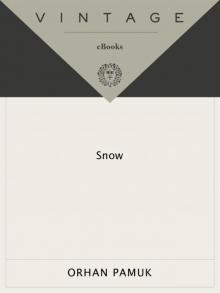 Snow
Snow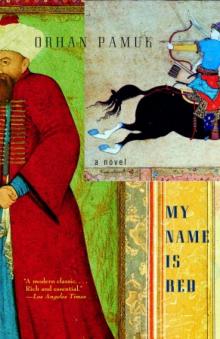 My Name is Red
My Name is Red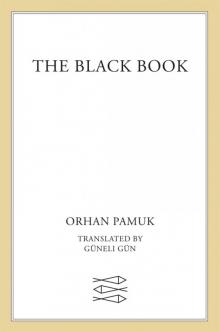 The Black Book
The Black Book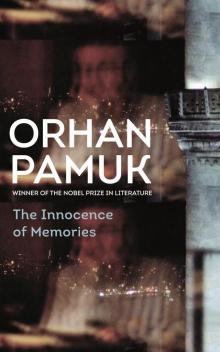 The Innocence of Memories
The Innocence of Memories The White Castle
The White Castle Other Colors
Other Colors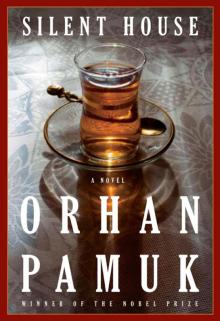 Silent House
Silent House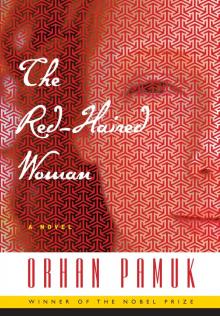 The Red-Haired Woman
The Red-Haired Woman The Museum of Innocence
The Museum of Innocence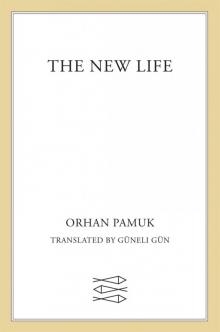 The New Life
The New Life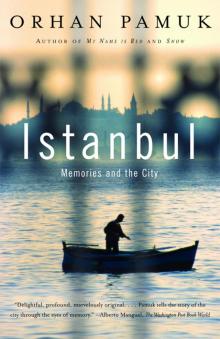 Istanbul
Istanbul